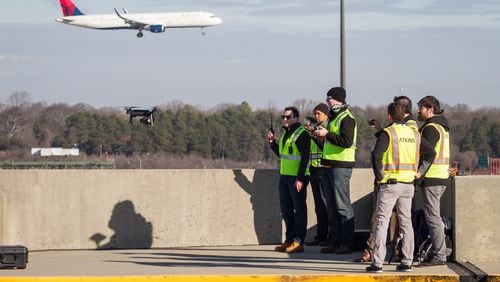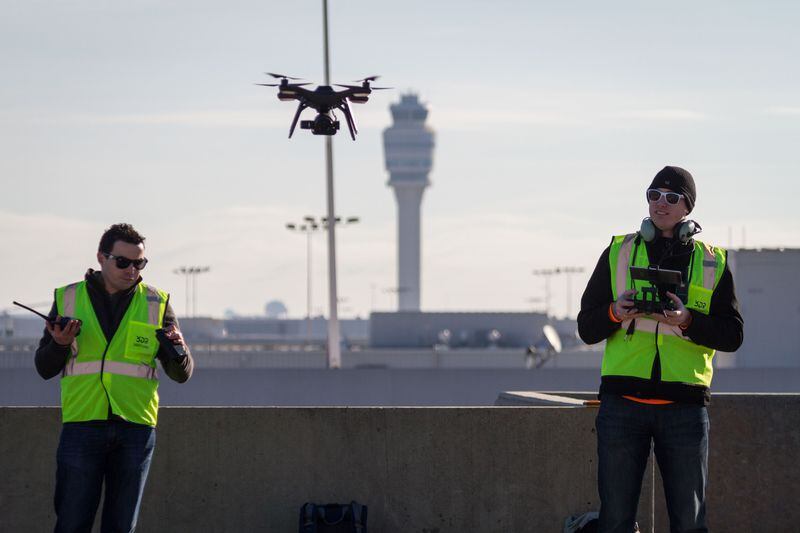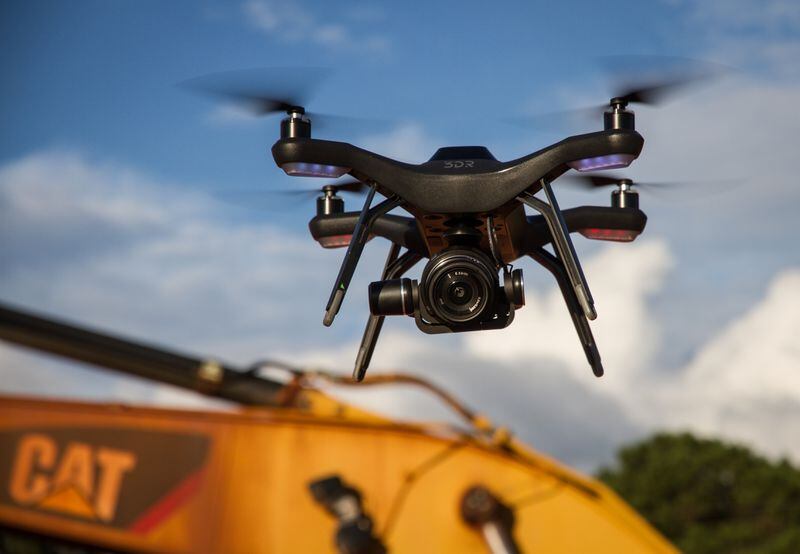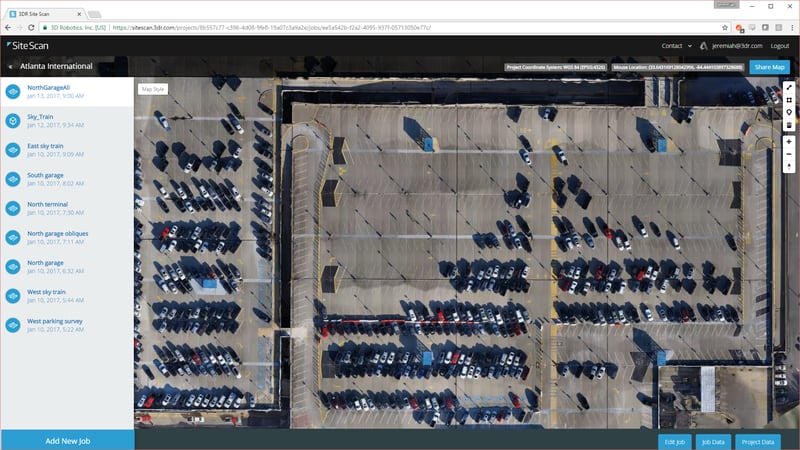Hartsfield-Jackson International Airport has started using drones on its property, under a recent federal clearances allowing certain commercial drone flights in the controlled airspace of major airports.
Soon, Hartsfield-Jackson plans to conduct its first drone flight over the airfield -- to survey the runway surface in preparation for future repairs, according to airport spokesman Andy Gobeil.
It's a new development because drones are generally not allowed in Class B airspace -- the type of airspace that surrounds Hartsfield-Jackson and other busy commercial airports -- without special permission.
But the Federal Aviation Administration last year said it had developed a safety framework so that “emerging technology can be rapidly introduced while protecting the safety of the world’s busiest, most complex airspace” -- and in December began allowing the first Class B drone flights to take off.
In late December 2016, the first drone flight in Class B airspace around Hartsfield-Jackson occurred just south of the airport, according to McDonough-based drone pilot firm Flyover Services. Flyover Services’ mission was to capture aerial images of a quarry off Riverdale Road close to a mile south of the airport for the quarry’s owner.
It took about 60 days to get the approval, according to Flyover Services partner Jacob Hinton.
Hinton and his partner are private pilots, “so we understand airspace flying,” he said. To get approval, “we had to prove that we could do it safely.”
For the drone flights on the morning of Dec. 21, Hinton said “we had to work around [the airport’s] schedule, because they use the [nearby] runway for international arrivals.”
There was a two-hour window that morning with few flights on that runway. “Safety is still the utmost high priority,” said Hinton, who also serves on a state commission on unmanned aircraft technology.
The drone flights were authorized up to 200 feet. Commercial airline pilots’ abort procedures take them right above the area where the drone flights were operating, so “we had to be able to pull immediately if a 747 came above us,” Hinton said.
But that didn’t happen, and Hinton’s team completed the drone flights over the quarry successfully and landed without incident.
Then, on Jan. 10 came the first drone flights over the airport property. An airport contractor preparing for the demolition and reconstruction of Hartsfield-Jackson's parking decks used a drone to capture imagery and aerial data of the garages. The parking deck project is part of Hartsfield-Jackson's $6 billion renovation and expansion.
Airport contractor and civil engineering firm Atkins worked with software firm Autodesk and drone company 3D Robotics to apply for the waiver from the FAA to operate the drone flights over the terminal garages, which sit next the midfield terminal in between runways. After approval, preparation for the drone flights took about three more weeks.
On the day of the flights over the airport property, “Everyone was a little excited, everyone was a bit nervous,” said 3D Robotics senior product marketing manager Kevin Sartori. “It was like almost forbidden.”
Gobeil said detailed planning between airport officials, the drone operator and the FAA allowed the operation to be safe and successful, and there was no impact to airline flights.
During the seven drone flights covering 40 acres of airport property over half a day, the drone flight team stayed in constant radio contact with the control tower at Hartsfield-Jackson.
Credit: Nicolas Bonnafoux
Credit: Nicolas Bonnafoux
Two drone pilots operated the drone flights from the north parking deck, the south parking deck the terminal roof and the curbside, along with the help of three spotters.
The drone weighs 4.4 lbs and measures 10 in. x 10 in. x 5 in., and each drone flight lasted about 15 minutes -- which is how long the battery lasts. The drone itself costs $5,000, along with $7,000 a year for the software, according to Sartori.
Credit: Kevin Sartori
Credit: Kevin Sartori
The drones can capture “the face of buildings and objects from angles you cannot achieve at higher altitudes,” according to Atkins. The Autodesk software stitches the photos together into 3D models.
Drones are “supplementing the workforce by doing in hours what normally would take days or weeks,” according to Autodesk strategic projects executive Tristan Randall in a written statement.
Without drones, “civil engineers would go on the parking garage with a laser scanner and then walk around, every 15 feet put down a laser scanner and take a measurement,” Sartori said.
“That would take weeks,” and it could disrupt the flow of cars in the parking garages. Drones offer “a new way to do construction, to do civil engineering,” he said.
The 3D models using data from the drone flights will help plan how to demolish the parking garages to minimize construction impact on the airport's daily operations, and to help with construction of the new garages and a new InterContinental hotel to be built next to the terminal, according to Hartsfield-Jackson.
In recent months, the FAA has granted more than 240 authorizations for drone flights across the country in Class B airspace -- the type of airspace that surrounds the busiest commercial airports.
By mid-February, six drone operations had been authorized to occur in Atlanta’s Class B airspace, according to the FAA.
About the Author










